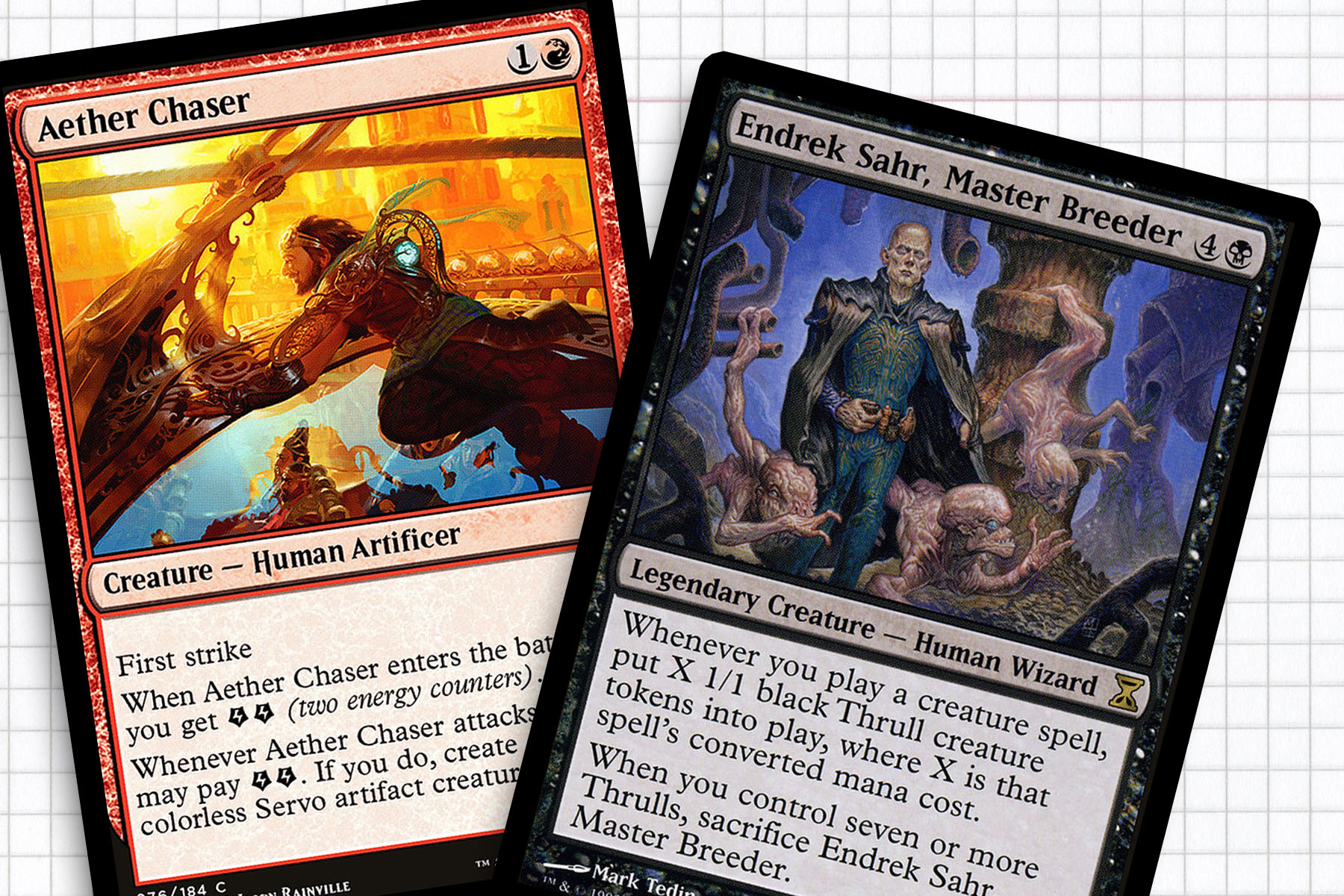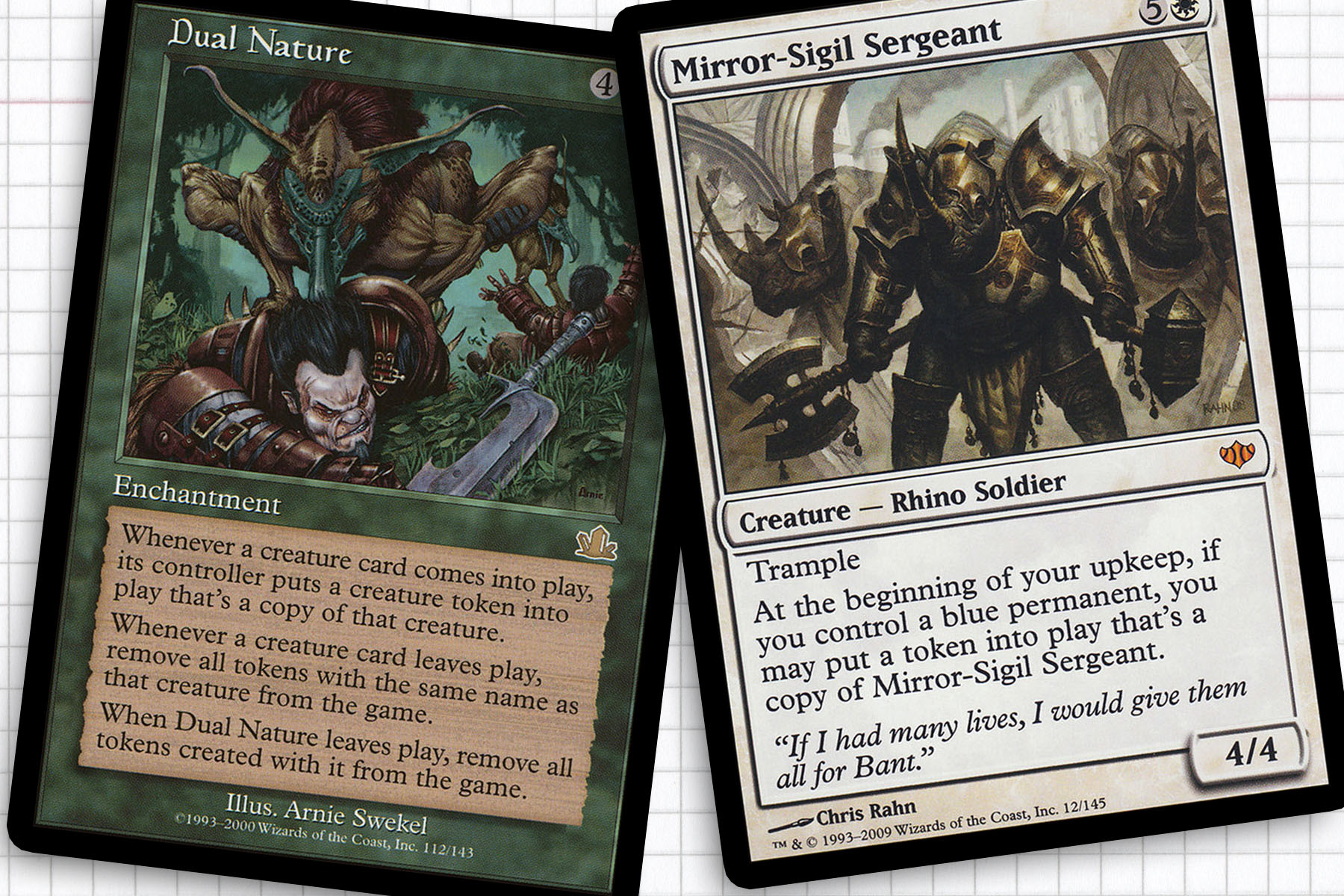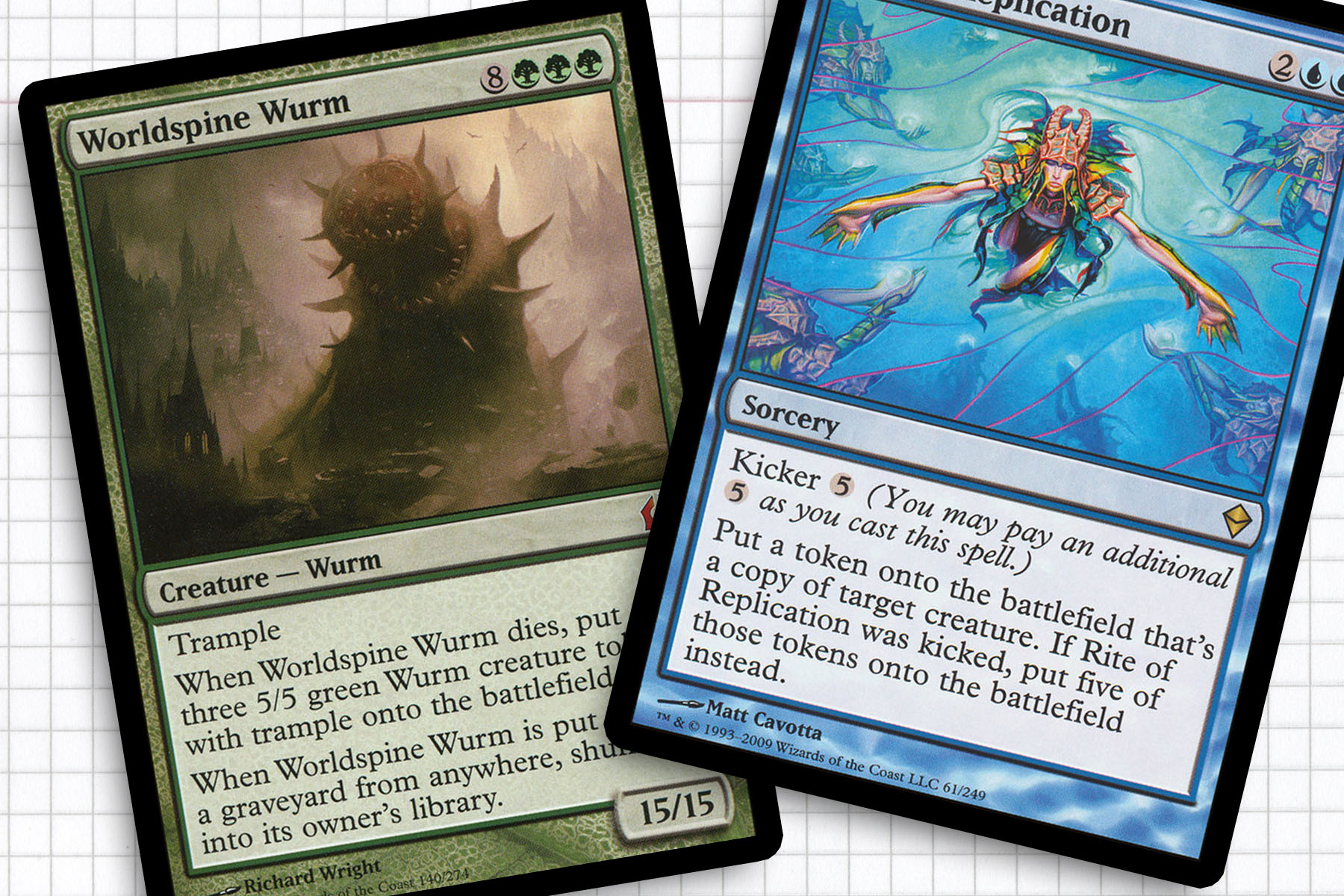I remember it clear as day. The year was 2011, and it was the second Friday Night Magic of Innistrad Standard. The local metagame was in flux, still recovering from Caw Blade, and the question of which deck would rise up to become “the best” was still pretty open ended. Not one to take Standard very seriously, I was only worried about defending myself against whatever I could wildly predict. If I remember correctly, it was The Eh Team podcast or Yo! MTG Taps that had me wise to Birthing Pod as an early contender for the deck to beat right out of the gates. Either way, I had main board Flashfreeze. The deck of choice that night was Blue-White deck that looked to cast Master’s Call or Blade Splicer into Shape Anew for my only maindeck artifact creature, Blightsteel Colossus.
Game one was the same all four rounds: I sat on my counter magic until my opponents end step, cast Master’s Call and untapped with my fourth land. Every game my opponent angled their hand to the side like a curious dog as I revealed card after card from the top of my deck, one or two foreseeing where this was going, but at least once there was some disbelief that I really built a deck with only two artifacts. I played nine games of Magic that night; seven lasted five turns, two stretched to six. One Birthing Pod was countered and three Huntmaster of the Fells. My only 4-0 ever.
Today’s article brought me back to that FNM: the idea of a deck with such extreme design constraints and a memorable pay-off, this time looking to have more fun than being outright competitive. Commander 2018 has already consumed an awful lot of my brain space in the last few weeks, especially as I’ve started looking deeper into the new legendary creatures of the set. Brudiclad, Telchor Engineer has been rather unassuming. It clearly has some passionate fans, but I haven’t seen waves being made yet. The idea of taking Faerie Artisans and Brass’s Bounty to start making half a dozen or more copies of creature sounds really fun, but it was the thought of Brudiclad being within the deck while still being the build around general that got my gears turning.
This thought process is nothing new. Josh Lee Kwai highlighted a five-color Nekusar the Mindrazer deck very early into The Command Zone podcast run, and I discussed aspirations of building around The Gitrog Monster in a four-color deck in the last few months. But this week, I’m looking to take it to the next level, having a very exact plan for retrieving my general that isn’t just “Step One: Draw until I find Brudiclad” but instead starts with Brudiclad being the only artifact in my deck and finding it with something akin to Shape Anew. The only question is, can this crazy plan work?
Brudiclad, Telchor Engineer
The story of Brudiclad, Telchor Engineer is pretty simple, but rather inspiring. Only appearing on one piece of flavor text, from Future Sight of all places, the Commander 2018 team looked to Sarcomite Myr and made the choice to make the quoted artificer part of Magic’s canon. The choice to make Brudiclad Red in addition to the natural assumption that it was certainly Blue speaks to the chaotic nature of this card. I wouldn’t be surprised if this card just gets better with time, possibly in the upcoming series of Ravnica sets.
The first suite of cards we want to shore up are our early artifact token creators. One of the advantages we have now that I didn’t have access to in 2011 is the group of mechanics built around creating artifact tokens like Investigate, Fabricate, gold, and treasure tokens. As such, we have a wealth of ways to set up an early Brudiclad. When it comes time to locate our in-deck general, there are a few options we can use. Shape Anew is the impetus for the deck, but Inventor’s Fair, Enlightened Tutor, Fabricate, or Treasure Mage can simply go retrieve it from our deck. We can combine the power of Final Parting with Refurbish or just use Chord of Calling. And if we want to bend our deck build restriction slightly, we can have Sphinx Summoner in the deck and accept that we might Shape Anew into it unintentionally.
The biggest hang up for this deck is going to be it’s restriction of running on no other artifacts within the deck, meaning that we will be replacing things like our signets by leaning on green for Rampant Growth, Dawn’s Reflection, and the all mighty Prismatic Omen to allow us to rush up to the six to eight mana we will need for the long haul. You can also use treasure or gold tokens to help fix and ramp your mana to make up for the loss of signets.

Making Dudes
Since the our strategy revolves around having smaller artifact tokens in play to reform into Bruidclad, the straightforward strategy is going to be dedicating most of low pieces of the curve to token making. For simplicity, my selections aim to have an artifact in play before my fourth turn. Aether Revolt probably had my favorite uncovered cycling for creating tokens in the form of servos with Aether Chaser, Aether Poisoner, and Aether Swooper. Any of the these two-drops will be able to attack in on turn three and generate the unassuming servo we need, while also potentially removing a blocker or just getting first blood.
From there White is our best friend. Spells like Master’s Call and Servo Exhibition mean that we can set up our board while having the blockers to deter random early attacks. Blade Splicer will be making an even more formidable creature, which might be the token of choice to copy if we created other tokens earlier. Anointer Priest will not be making tokens early on, but will be netting us points of life starting early in the game.
For much of my brainstorming about this deck for generically good token creators, I had to wonder if black was going to be needed for anything beyond Bitterblossom. But is was Endrek Sahr, Master Breeder that convinced me otherwise. The big drawback woven into the card is that there is an upper limit to the amount of Thrulls you can have in play, but you don’t often slot Endrek in without a plan for the tokens. In this case, producing any number of tokens lower than seven in a given main phase will only benefit us during our next combat step, because all our Thrulls will simply become something else: treasure, myr, maybe even a 10/10 eldrazi.

Taste the Rainbow
There is no question that a traditional Brudiclad deck is viable. There are plenty of blue/red token makers, including some of the best ways to make token copies of real creatures in the form of Rite of Replication and Splinter Twin. In fact, the first thing I wanted to was copy Taurean Mauler and just let my creatures all benefit off that for a few turns before going to town. But what I would like to concentrate my efforts on today are the cards we gain through the other colors being added. For instance, after a year of living in relative obscurity, this could be the deck that make Fractured Identity really shine.
Exploring the other colors, it was Mycoloth that secured my feeling that a deck existed with this crazy shell, but that didn’t seem like it was going to be the crux of our deck and certainly wouldn’t be rushed out on turn five. There is no question that Brudiclad can benefit from having Anointed Procession and Doubling Season, in fact Wizards probably felt okay pushing Brudiclad because they would be avoiding that interaction in Commander. But if we’re already contorting our deck to allow for five colors, we’d be stupid to overlook the synergy.
For similar doubling effects, we can look to the long forgotten gems like Dual Nature or Parallel Evolution to quickly expand our battlefield. Or harness the power of the recent Battlebond mythic, Bramble Sovereign to speed up our token making options. And there is Nevermaker, a card that gained tons of value with this Commander release and that can be a valuable mold for all our other creatures if we happen to make a token copy.

This is the Endgame
Wrapping up, we should talk about some of the fun things I have in store—as Mike Flores put it in Stage-Skipping Standard, my Stage 3 endgame. Mirror-Sigil Sergeant is a card I have had on my radar since returning to Magic with the release of Magic 2010. As I scanned the back catalog of cards that had come out in the previous two years, it was not Cryptic Command or Cruel Ultimatum that occupied my thoughts, but this forgettable Rhino Soldier. Admittedly the card needs a turn to naturally start pumping out tokens, but once it does, Brudiclad’s token warping ability can grant us an enormous amount of profit. Even if all we are doing is taking our tokens from 2/2s to 4/4 tramplers, there is a lot of upside.
Right off the bat, augmenting our creatures to be harder to block with Archetype of Imagination or the very blunt Bedlam will mean that once we have our creatures optimized, we won’t have to worry about anything getting in our way. In similar spirit, Giant Adephage will cause our battlefield to explode with creatures, then later transform all our other tokens into 7/7s. Topping off everything, I would be looking to cast Worldspine Wurm or It That Betrays with either a Splinter Twin attaching to it or hitting it with Rite of Replication.
This deck might be ambitious to say the least, possibly overlooking the easy answer of just playing Brudiclad in the position easiest to pluck them out of, the command zone. There is no question in my mind that Brudiclad is a great card,;but in trying to construct the outline of my working list, I had to purposely push my focus away from all the awesome cards naturally available. But as I thought about all the crazy things I could do with a little creativity, the more I wanted to craft something unique.
This is a deck I am working on improving upon; here is my working decklist, and we’ll see how it evolves over time. For those who want to experiment with the themes of this deck, but still be able to get use out of their artifacts, Najeeli, the Blade-Blossom is a five-color general who produces tokens by herself and Brudiclad would be a fitting piece of the other 99. Joining me next week when I’ll probably be doing something more rational.

